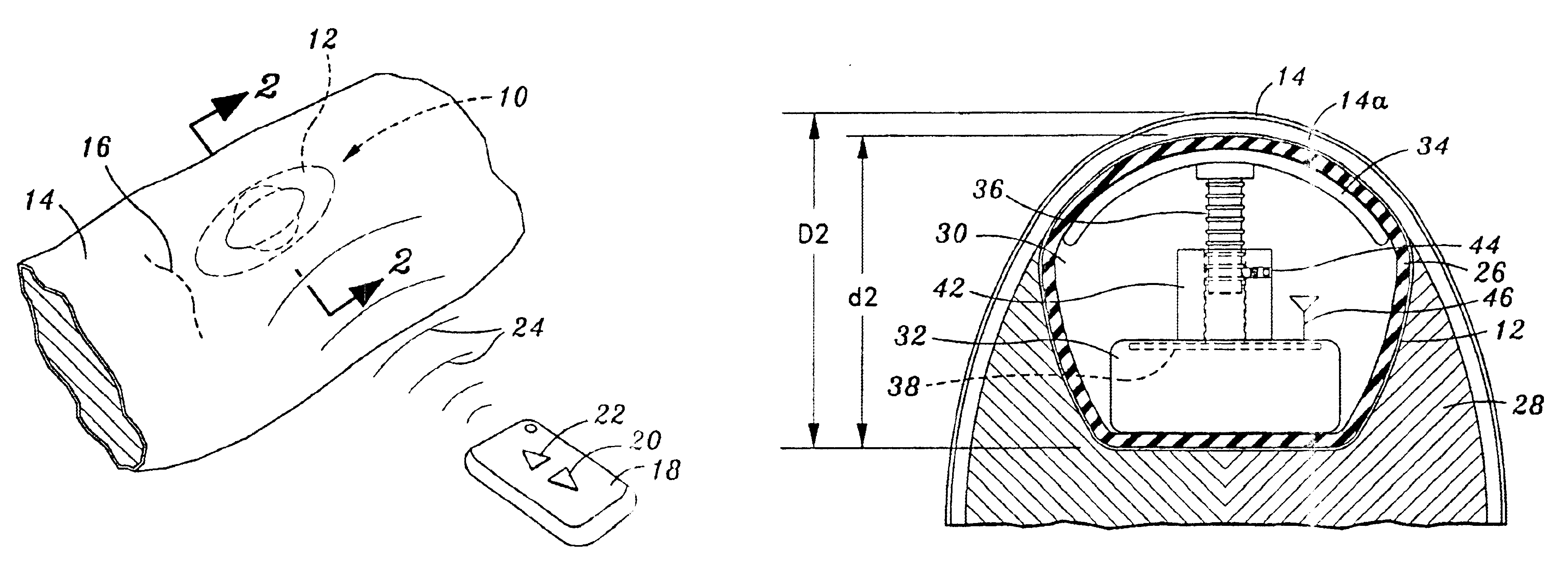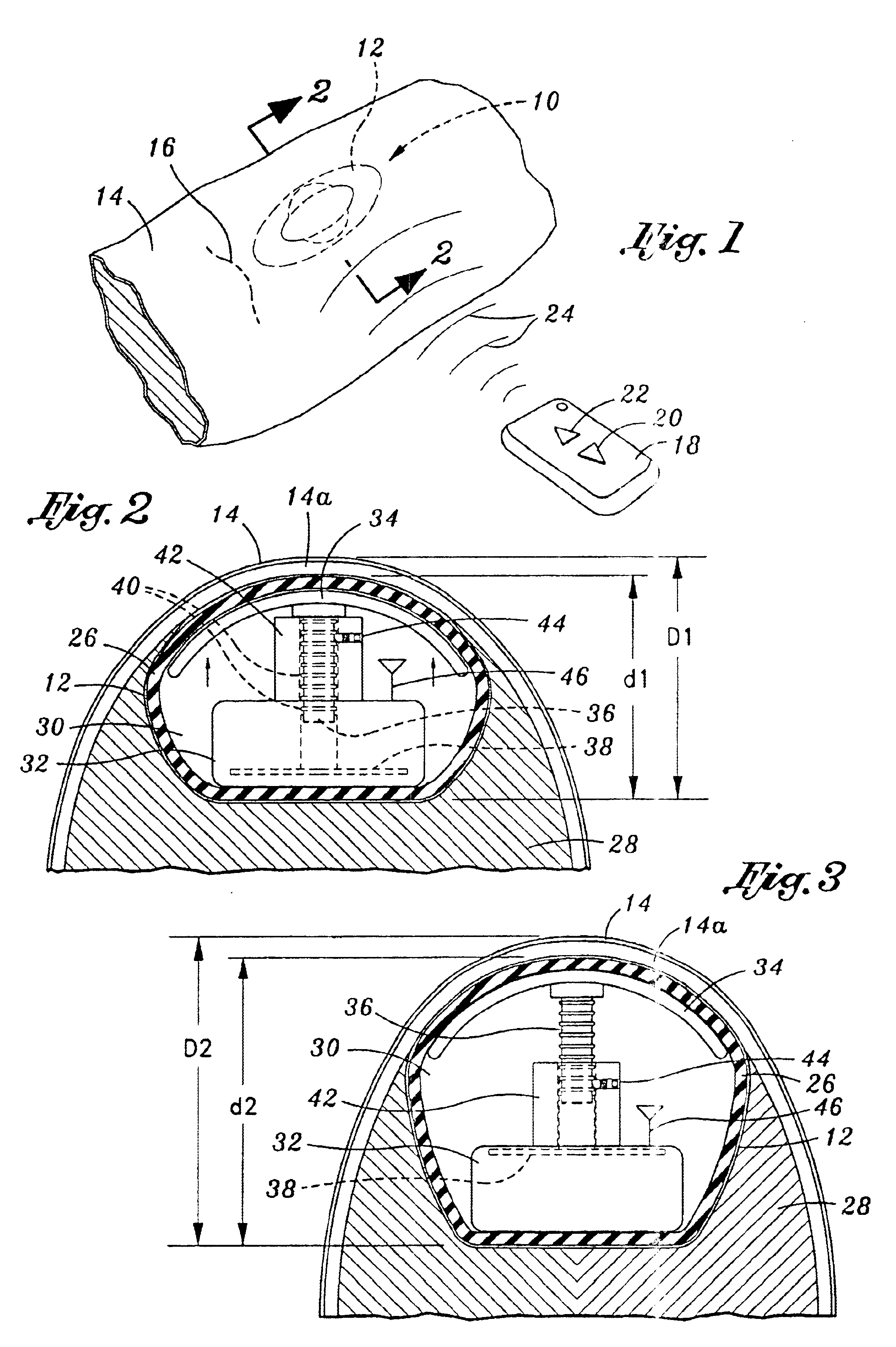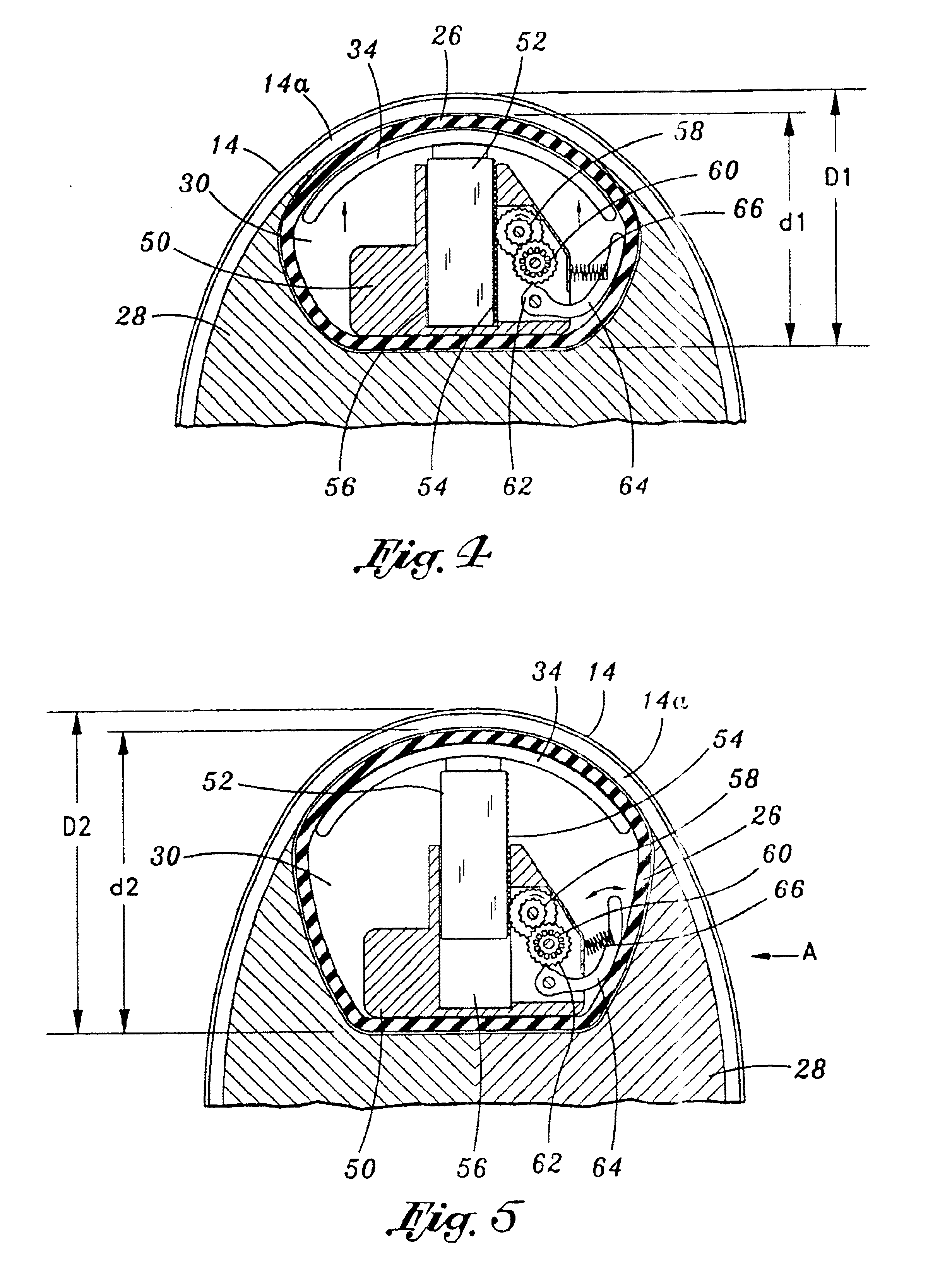Tissue expander, system and method
a tissue expander and expander technology, applied in the field of tissue expanders, can solve the problems of increasing the risk of inadvertent needle stick experience, inadvertent puncture of the expander inflatable body, and the inability to expand the body of the expander, so as to minimize the external surface area of the tissue expander, improve the effect of expansion, and reduce the pain
- Summary
- Abstract
- Description
- Claims
- Application Information
AI Technical Summary
Benefits of technology
Problems solved by technology
Method used
Image
Examples
Embodiment Construction
[0033]The detailed description set forth below is intended as a description of the presently preferred embodiment of the invention, and is not intended to represent the only form in which the present invention may be constructed or utilized. The description sets forth the functions and sequences of steps for constructing and operating the invention. It is to be understood however, that the same or equivalent functions and sequences may be accomplished by different embodiments and that they are also intended to be encompassed within the scope of the invention.
[0034]Referring now to the drawings, and initially to FIG. 1, there is illustrated a tissue expander 10 for use in facilitating the growth of skin and subcutaneous tissue, as may be desired for a wide variety of medical procedures. As illustrated, the device 10 comprises an implantable encapsulated body mass 12 that is designed to be positioned beneath the skin 14 of a patient through incision 16. In this regard, it is contempla...
PUM
 Login to View More
Login to View More Abstract
Description
Claims
Application Information
 Login to View More
Login to View More - R&D
- Intellectual Property
- Life Sciences
- Materials
- Tech Scout
- Unparalleled Data Quality
- Higher Quality Content
- 60% Fewer Hallucinations
Browse by: Latest US Patents, China's latest patents, Technical Efficacy Thesaurus, Application Domain, Technology Topic, Popular Technical Reports.
© 2025 PatSnap. All rights reserved.Legal|Privacy policy|Modern Slavery Act Transparency Statement|Sitemap|About US| Contact US: help@patsnap.com



